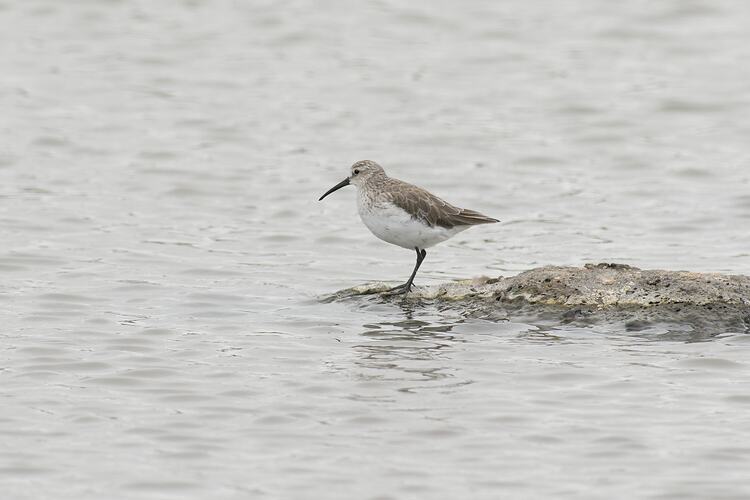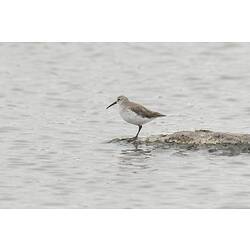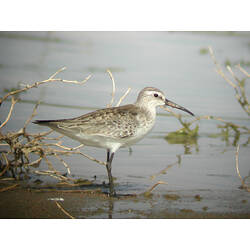General Description
A small migratory wader. Their non-breeding plumage is light grey-brown above and white below with a curved white stripe above the eye and a wide white stripe on the wings. The black bill is narrow and curves down at the tip. When breeding, the head, neck, bill and underparts are bright red-brown and the wings are barred black. Their legs and feet are black. Bill to tail length is up to 23 cm.
Biology
Curlew Sandpipers breed in Alaska and Siberia and migrate to Australia for the southern summer. They arrive here in September and depart in March-April. They are commonly seen with other shorebirds. They feed on marine invertebrates, particularly polychaete worms. Prey is caught by pecking at the surface of mud or probing their bills into the ground, wading into belly-deep water. Curlew Sandpiper numbers have decreased sharply in recent years and they are now listed as Critically Endangered across Australia (EPBC Act). Curlew Sandpipers are affected by coastal development including habitat destruction and loss, habitat fragmentation, inappropriate drainage regimes and human disturbance.
Distribution
Breeds in north-eastern Siberia and Alaska then migrates to mainland Australia and Tasmania, New Zealand, Indonesia, New Guinea, southern Asia and Africa for the southern summer.
Habitat
Intertidal mudflats, saltmarshes, estuaries, mangroves, wetlands and beaches. Breeding habitat consists of lowland tundra.
More Information
-
Animal Type
-
Animal SubType
-
Brief Id
A small, slender grey-brown and white migratory shorebird with a long bill that curves slightly downwards.
-
Colours
Grey, Brown, White
-
Maximum Size
23 cm
-
Habitats
-
Diet
Carnivore
-
Diet Categories
Insects, Inverts
-
Endemicity
-
Conservation Statuses
CITES: Not listed, EPBC Act 1999: Critically Endangered, FFG Threatened List: Critically Endangered, IUCN Red List: Near Threatened
-
Taxon Name
-
Common Name
Curlew Sandpiper
-
Kingdom
-
Phylum
-
Subphylum
-
Class
-
Order
-
Family
-
Genus
-
Species Name
ferruginea





